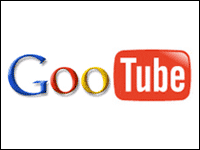Transcript
BOB GARFIELD:
The Internet, and especially online video, are the revolutionary technologies that have been storming the media Bastille for a decade. There is already plenty of blood on the streets. The market value of mainstream media properties has been cut in half, for example.
But the turning point of the struggle will almost certainly turn on video. YouTube and others have changed consumer behavior on a grand scale and ended Hollywood's monopoly on creating and distributing content. But nobody has figured out how to make money doing so because nobody has figured out how to sell advertising against a two-minute video clip - that is, maybe until now.
Google has announced its long-awaited ad strategy for YouTube. It hinges on a scroll at the bottom of the video window. You can click on it or you can ignore it altogether. My colleague, Abby Klaassen, follows the technology beat for Advertising Age, and she joins me now. Abby welcome to the show.
ABBY KLAASSEN:
Thanks Bob.
BOB GARFIELD:
So is this the game changer everybody's been waiting and watching for?
ABBY KLAASSEN:
Well, I think it's certainly something that we've all been anticipating since Google bought YouTube for 1.65 billion almost a year ago. What I think is interesting about this ad format and where YouTube is placing the ads is it's fairly confined to the premium and so-called "torso" or mid-tail content. It's not the true long-tail stuff that originally defined YouTube.
BOB GARFIELD:
The stuff made by ordinary Joes for ordinary Joes.
ABBY KLAASSEN:
Exactly - the toilet-flushing cats and the college kids lip-synching in their dorm room to Backstreet Boys, that sort of thing.
BOB GARFIELD:
Now, it seems to me that there's three things that online video has to do to succeed as an ongoing business. One is to find an ad format that consumers won't immediately reject.
Let's start with that. That's been a problem ‘til now. YouTube users just didn't want to watch a commercial before a video rolled and had no intention of sticking around after the video to watch one.
ABBY KLAASSEN:
Absolutely. One of the things that Google has pushed pretty hard as they've introduced this ad unit is calling it less intrusive. They say that this unit, which is basically a simple Flash-based graphic that appears across the lower 20 percent or so of the screen shortly after the video launches, they say that that's much less intrusive. It's what they call "user-initiated" because when you see the unit you can click it to play a video ad or a commercial or a two-minute movie trailer. But if you don't click it, it goes away after about 5, 10 seconds.
BOB GARFIELD:
Okay. So maybe that's one problem solved, but the lingering problems are intellectual property - a lot of stuff on YouTube is basically [LAUGHS] stolen - and context. You know, if you're selling flea collars and you want to put your ad next to a cute little kitty cat, there's no way of knowing whether you're getting a cat flushing a toilet or a cat with a firecracker blowing up in its face.
ABBY KLAASSEN:
I think that's one of the reasons that YouTube is rolling this out in a very limited fashion and only with the professional content with whom they've struck distribution agreements - people like Warner Music Group, Ford Models - produces videos of style tips and that sort of thing. I mean, these are people that YouTube has gone out and signed to content deals. And that way, you know, they can ensure that they're not violating those copyrights.
Why not roll it out widely? Because, frankly, user-generated content is still very risky because of those copyright issues, and if YouTube started to monetize that stuff, it opens up a whole Pandora's box of issues for them, I'm afraid.
BOB GARFIELD:
You mentioned that these ads are going to appear mainly on professionally produced content for the time being. Could this somehow divert the mission of YouTube from being basically a consumer-generated site to one that is just another distribution channel for the Hollywood big boys who we've grown accustomed to since time immemorial?
ABBY KLAASSEN:
They said in the end we're not getting rid of user-generated content. We're definitely still going to stick to those roots. They said - and I'm quoting here one of their product managers, who said, "I wouldn't say the site is necessarily evolving in the sense of leading toward these monetization partners directly, but those users will get the opportunity, by joining their partner program, to be rewarded, like any other content provider."
Now, that's what they say. They say there will always be a home for user-generated content on YouTube. But if these aren't the videos they're monetizing, who knows? I mean, they're lucky enough that Google has deep pockets that it can take a loss serving some of the bandwidth for some of these really obscure user-generated videos that they'll never be able to monetize.
BOB GARFIELD:
Okay, Abby. I really appreciate your joining us.
ABBY KLAASSEN:
Thanks so much, Bob.
BOB GARFIELD:
Abby Klaassen covers technology for Advertising Age, which is where I have my, uh, day job.
[MUSIC UP AND UNDER]
Coming up — how ambient technology communicates important information in a laid-back fashion. This is On the Media from NPR.

